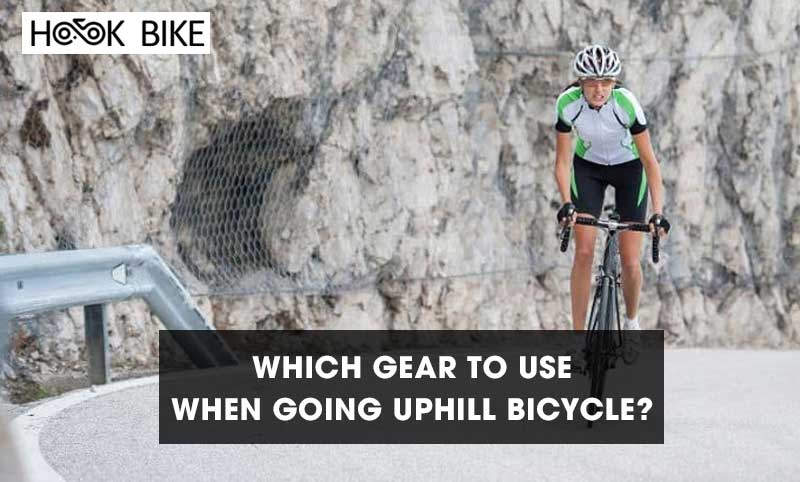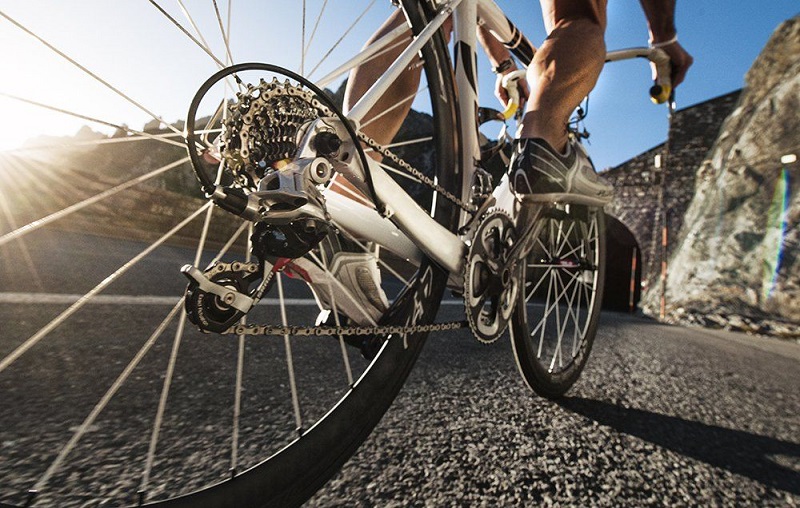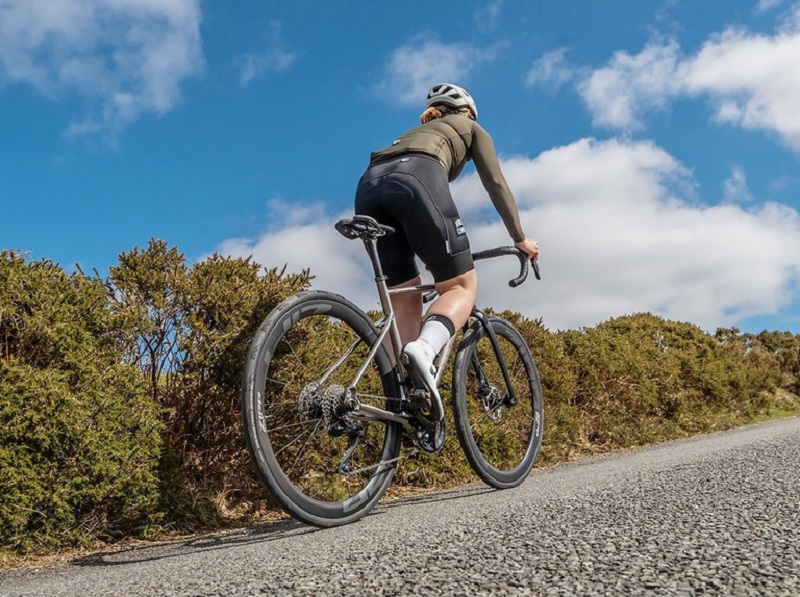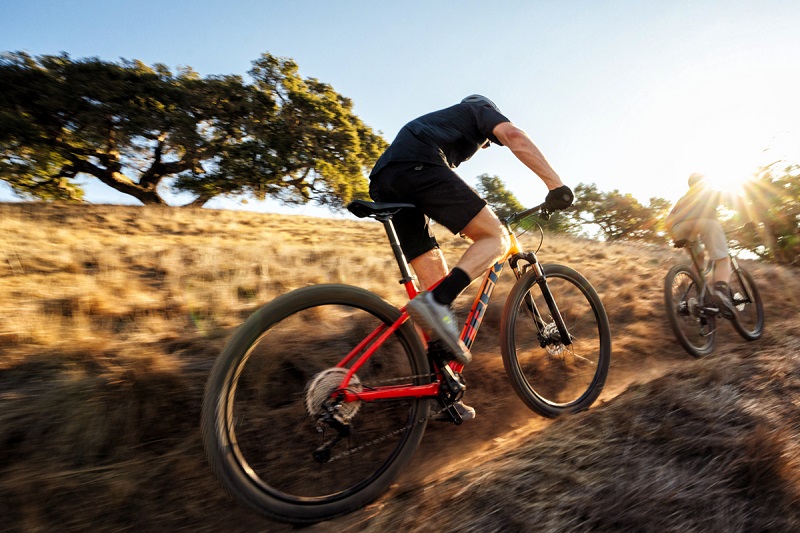Parts
Which Gear To Use When Going Uphill Bicycle?
Cycling uphill can be a daunting challenge for many riders. Whether you’re a seasoned cyclist or a beginner, the key to conquering those steep inclines is knowing which gear to use. In this comprehensive guide, HookBike’s will delve learn about Which gear to use when going uphill bicycle?, offering valuable insights and tips to ensure a smoother and more efficient uphill cycling experience.
Understanding Your Bicycle Gears
Before we explore the specifics of choosing the right gear for uphill cycling, it’s crucial to grasp the fundamentals of your bicycle’s gear system. Most bicycles, especially those designed for various terrains, come equipped with a range of gears. These gears play a pivotal role in determining the ease or difficulty of pedaling, which is especially important when tackling uphill climbs.
Know Your Gears:
- Front Gears (Chainrings): Typically, bicycles have two or three front chainrings. These control the major gear changes and can be switched manually.
- Rear Gears (Cassette or Freewheel): The rear gears are usually arranged in a set known as a cassette or freewheel. They fine-tune your gear ratio, allowing for smaller, incremental adjustments.

Which Gear To Use When Going Uphill Bicycle?
When you’re cycling uphill, it’s important to choose the right gear to make the climb more manageable and efficient. The appropriate gear selection can help you maintain a comfortable cadence (pedaling speed) and conserve energy. Here are some tips for selecting the right gear when going uphill on a bicycle:
Start in a Low Gear
Begin the climb in a lower, easier gear to get your momentum going. This will help you avoid putting too much strain on your muscles right from the start.

Maintain a Comfortable Cadence
Aim to maintain a cadence of around 70-90 revolutions per minute (RPM). This means your feet should be spinning at a comfortable speed. If you’re pedaling too slowly or too quickly, adjust your gears accordingly.
Anticipate the Incline
If you see a hill coming up, shift to a lower gear a bit before you start the climb. This helps you smoothly transition into the ascent without losing momentum.
Use the Rear Derailleur
For most bikes, the rear derailleur is responsible for the majority of your gear changes when climbing hills. Shift to a lower gear (larger rear sprocket) to make pedaling easier.
Front Derailleur (Optional)
If you have a bike with a front derailleur and multiple chainrings, you can shift to a smaller chainring in the front to further reduce the resistance. However, try to avoid frequent front derailleur shifts as they can be more abrupt and may require you to ease off the pedals momentarily.
Listen to Your Body
Pay attention to how your body feels. If you’re struggling to maintain a comfortable cadence, shift to an easier gear. It’s better to spin faster in a lower gear than to grind away in a higher gear.
Maintain Momentum
If the terrain allows, build up some speed before hitting the hill. Momentum can help carry you partway up the incline, making it easier to conquer.
See more: Bicycle Gears Explained – Guide to Shifting

Practice
Riding uphill can be challenging, especially if you’re not used to it. With practice, you’ll become better at choosing the right gear for various types of hills and managing your effort.
That the best gear choice can vary depending on the steepness of the hill, your fitness level, and your bike’s gear ratios. Experiment with different gear combinations during your rides to find what works best for you. The goal is to make the climb manageable and ensure you don’t exhaust yourself too quickly.
Gear Shifting Techniques
Now that you’ve assessed the key factors, let’s explore how to shift gears effectively while climbing uphill.
Anticipate the Climb
Plan Ahead: As you approach an uphill section, anticipate the need to shift gears in advance. This proactive approach helps maintain a steady rhythm.

Shift Early and Smoothly
Pre-Emptive Shifts: It’s often better to downshift a gear a bit early rather than struggle in a higher gear. Smooth gear changes prevent unnecessary stress on your drivetrain.
Avoid Cross-Chaining: Be mindful of cross-chaining, which can cause excessive wear on your components. Try to maintain a straight chain line.
Find Your Sweet Spot
Experiment: Don’t be afraid to experiment with different gears to find your optimal pedaling resistance. Everyone’s preference is different, so find what works best for you.
Maintain Momentum
Pedal Through the Crest: As you reach the peak of the climb, continue pedaling to maintain momentum and prevent unnecessary energy loss.

Tips for Uphill Cycling Success
Cycling uphill can be challenging, but with the right techniques and strategies, you can improve your uphill cycling performance. Here are some tips for uphill cycling success:
Pace Yourself: Don’t start too fast. Begin the climb at a comfortable pace, and gradually increase your effort as you get into the ascent. It’s essential to find a sustainable rhythm.
Gear Selection: As mentioned earlier, choose the right gear to maintain a comfortable cadence. Shifting to an easier gear will make it easier to pedal uphill. Avoid cross-chaining, which means using extreme combinations of gears that can cause mechanical issues.
Stay Seated: Whenever possible, stay seated while climbing. This allows you to use your body weight to press down on the pedals and conserve energy. Stand only when necessary, such as when you need extra power on steeper sections.
Look Ahead: Focus your gaze a few meters ahead to anticipate changes in gradient and road conditions. This helps you plan your gear changes and maintain a smooth rhythm.
Breathe Deeply: Maintain controlled, deep breathing to ensure your muscles get the oxygen they need. Don’t hold your breath or breathe too shallowly.
Use Your Core: Engage your core muscles to stabilize your upper body. This will help you maintain balance and maximize your power output.
Relax Your Grip: Keep a light but firm grip on the handlebars. Tensing your arms and hands can waste energy and cause discomfort.
Stay Relaxed: Focus on staying relaxed in your upper body, shoulders, and neck. Tension in these areas can lead to fatigue and discomfort.
Practice Climbing Techniques: Learn and practice techniques such as “zigzagging” (alternating sides of the road to reduce gradient) and “out-of-the-saddle” climbing for steep sections.
Maintain a Positive Mindset: Uphill cycling can be mentally challenging. Stay positive and remind yourself that every pedal stroke gets you closer to the top. Visualize your success.
Hydrate and Fuel: Ensure you’re properly hydrated and have enough energy for the climb. Consume water and snacks as needed, especially on long and demanding ascents.
Training: Regularly include hill training in your cycling regimen to build strength and endurance specific to climbing. This will help you become more proficient at tackling hills.
Weight Management: Reducing the weight of your bike and gear can make climbing easier. Consider lighter components and pack essentials only.
Know the Route: Familiarize yourself with the route before the ride. This way, you can plan your effort and gear selection based on the specific hills you’ll encounter.
Group Riding: If you’re cycling in a group, take advantage of drafting behind others on the climb. This can provide a significant energy-saving benefit.
See more: Do you shift gears while pedaling?

That practice and experience are key to improving your uphill cycling abilities. Over time, you’ll become more efficient and confident when tackling climbs. Don’t get discouraged by challenging ascents; they’re an opportunity to grow as a cyclist.
Conclusion
In conclusion, choosing the right gear for uphill cycling is a skill that can significantly impact your riding experience. By understanding the terrain, your fitness level, and the intricacies of your bike’s gears, you can make informed gear selections and tackle uphill climbs with confidence.
Remember that practice and experience are key to mastering this skill. Experiment with different gears, monitor your cadence, and maintain your bike in top condition to ensure a smooth and enjoyable ride, even when facing challenging ascents.
Armed with these insights and techniques, you’ll be well-prepared to conquer any uphill challenge that comes your way. So, gear up and get ready for some exhilarating uphill cycling adventures!

